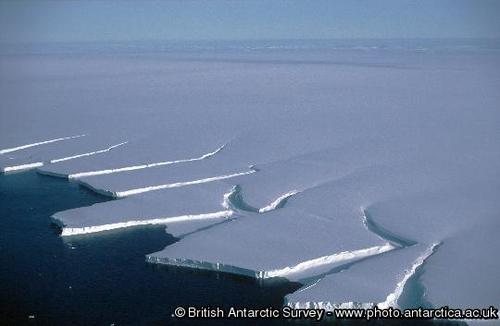Our understanding of how, and why, the earth’s largest ice sheet lost so much of its ice between 7,000 and 14,000 years ago has significantly improved due to research conducted by an international team of researchers led by VUW scientist Dr Andrew Mackintosh.
The research, published in prestigious journal Nature Geoscience this morning, used a mixture of field observations as well as modelling to understand what drove the ice loss, and whether it contributed to a significant rise in sea level – meltwater pulse 1a – of about 20m some 14,700 years ago.
The study’s results have implications not only for hypotheses about the cause of the ice sheet’s retreat, but will also be important for scientists’ ability to model future sea level rise due to melting ice sheets.
The SMC asked local scientists with expertise in the field to comment on the significance of the research. Further comments will be posted to the SMC website.
 Professor Peter Barrett, of the Antarctic Research Centre and NZ Climate Change Research Institute at Victoria University of Wellington, comments:
Professor Peter Barrett, of the Antarctic Research Centre and NZ Climate Change Research Institute at Victoria University of Wellington, comments:
“I have worked as a geologist in Antarctica since 1962 and for the first 16 years I could not have imagined that the ice sheet would begin to melt in my lifetime. Then in 1978 John Mercer argued in Nature that the West Antarctic Ice Sheet might collapse through rising CO2 emissions in 50-100 years. Few believed John at the time, but now satellites tell us that ice loss from Antarctica and Greenland is under way and accelerating. These ice sheets already contribute around half of present global sea-level rise and are likely to dominate in the future. We need to know how and why in order to see what can be done both to mitigate ice loss and address inevitable consequences.
“The paper just published by Andrew Mackintosh and colleagues from NZ, United States and Australia represents a major advance in both approach and new understanding of ice loss from Earth’s largest ice sheet (57 m sea-level equivalent). They report on its most recent and most substantial loss of ice in the last 100,000 years – a period from around 14,000 to 7000 years ago, when it lost 10 m of sea-level equivalent. This is less than 10% of the total ice loss since the last Ice Age, which raised sea level by 120-130 m, for most of that ice came from the huge Northern Hemisphere ice sheets. But now the roles have been reversed, with over 90% of the world’s ice in Antarctica, and now at risk from future warming.
“The strength of their case comes from the integration of hard-won field observations from Antarctica and ice sheet modelling, with results not only internally consistent but tested against data on ice retreat and sea level rise from other parts of the world. The case is first built on the integration of a history of ice sheet lowering for the central sector of the East Antarctic Ice Sheet (measured by dating the time since mountains emerged from the ice) with a history of ice sheet retreat from the edge of the adjacent continental shelf (measured in two separate locations by carbon-dating sediments deposited after floating of grounded ice began). This history was then simulated first with a simple 2-D cross-sectional model and then with a continent-wide 3-D model.
“The results are significant not only in confirming a long-held view that the retreat of the Antarctic ice sheet since the Last Glacial Maximum was a consequence of both rising sea level from melting northern hemisphere ice sheets and regional warming, but they explain the 6000 year lag in Antarctic response. They also show the importance of the differing shapes of the drainage basins that make up each ice sheet in determining their dynamic behaviour and specifically history of ice loss.
“One message from this paper is that with the Antarctic ice sheet now melting integration of onshore and offshore paleodata will be critical for constraining modelling of its drainage basins for projecting future sea level rise. A further message is that the source for the 20-m-rise in sea level 14000 years ago (Meltwater Pulse 1A) must be sought outside the Antarctic Circle.”
Note to editors
The Science Media Centre (SMC) is an independent source of expert comment and information for journalists covering science and technology in New Zealand. Our aim is to promote accurate, evidence-based reporting on science and technology by helping the media work more closely with the scientific community. The SMC is an independent centre established by the Royal Society of New Zealand with funding from the Ministry of Research, Science and Technology. The views expressed in this Science Alert are those of the individuals and organisations indicated and do not reflect the views of the SMC or its employees. For further information about the centre, or to offer feedback, please email us at smc@sciencemediacentre.co.nz.